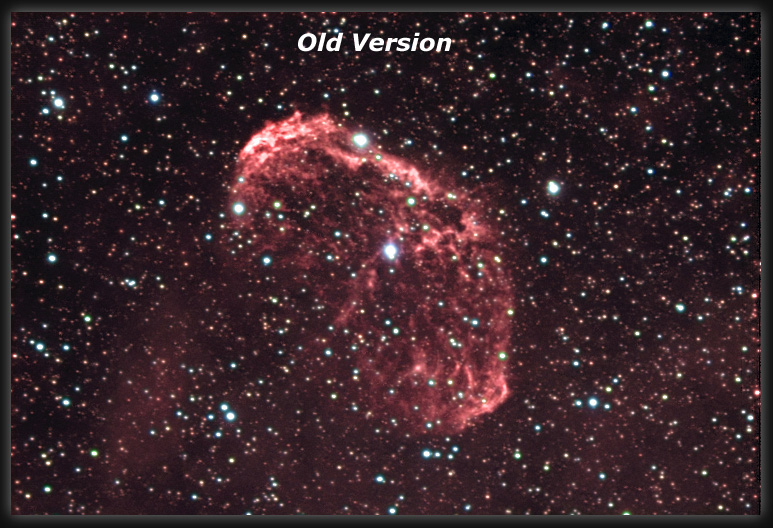
If you mouseover the image, you will switch between the two versions.
This page gives a comparison of two methods of processing the HaRGB image. The original version combines (Ha + R) then uses this as the new R channel for the HaRGB combine, in an effort to increase the red component and eliminate the salmon color that is typical of a straight HaRGB combine. I didn't like the reddish color it imparted (or I imparted trying to get the color right! :D ) to the fainter stars, so I added another method.
In the second version, I created a straight HaRGB combine, that had better looking stars. I then selected only the stars, and overlayed them onto the Ha(HaR)GB version. This kept the color of the nebula, yet gave slightly "truer" star colors. The difference is subtle, but noticible. All work was performed in AstroArt3 and PhotoShop 7.